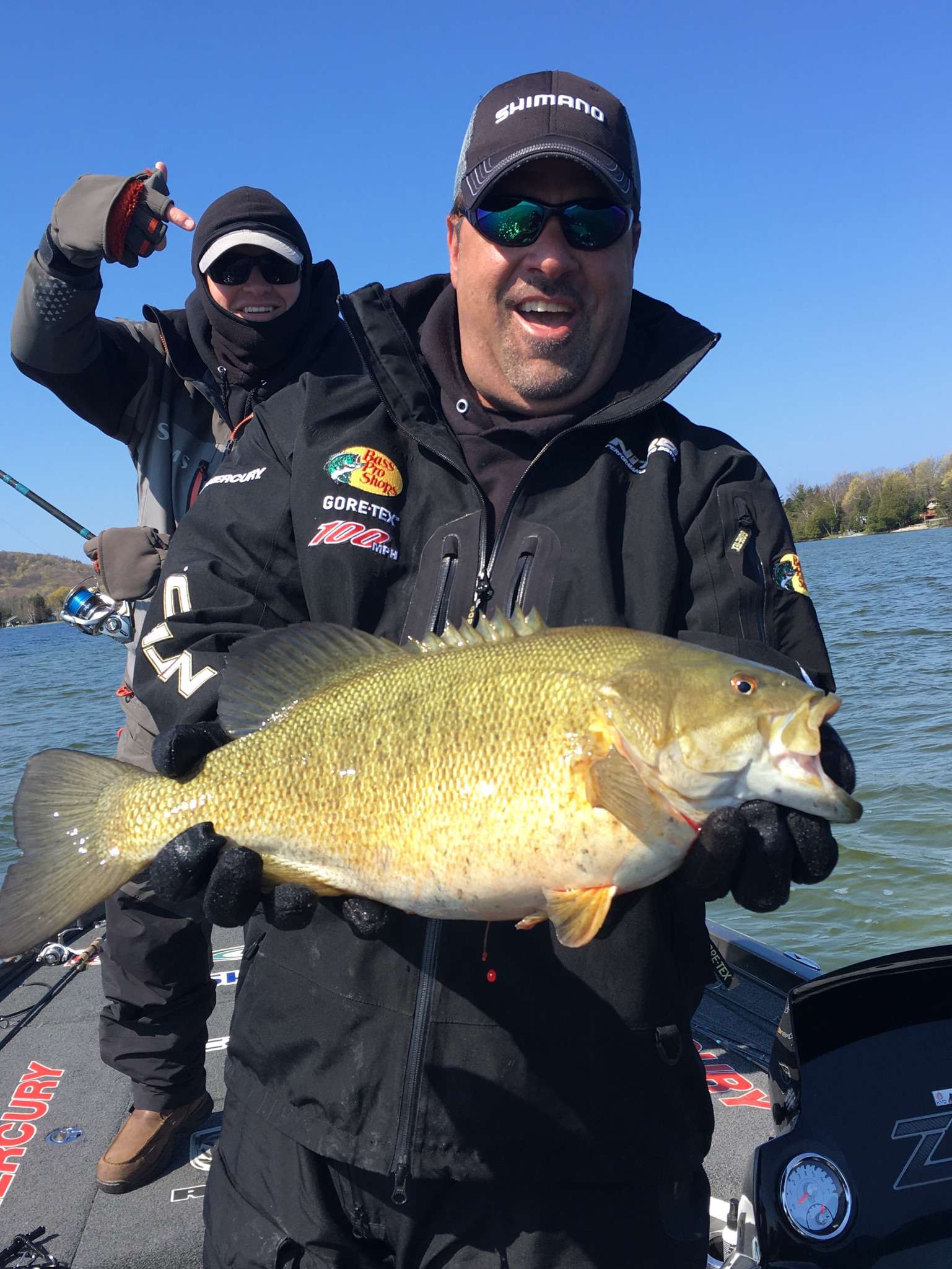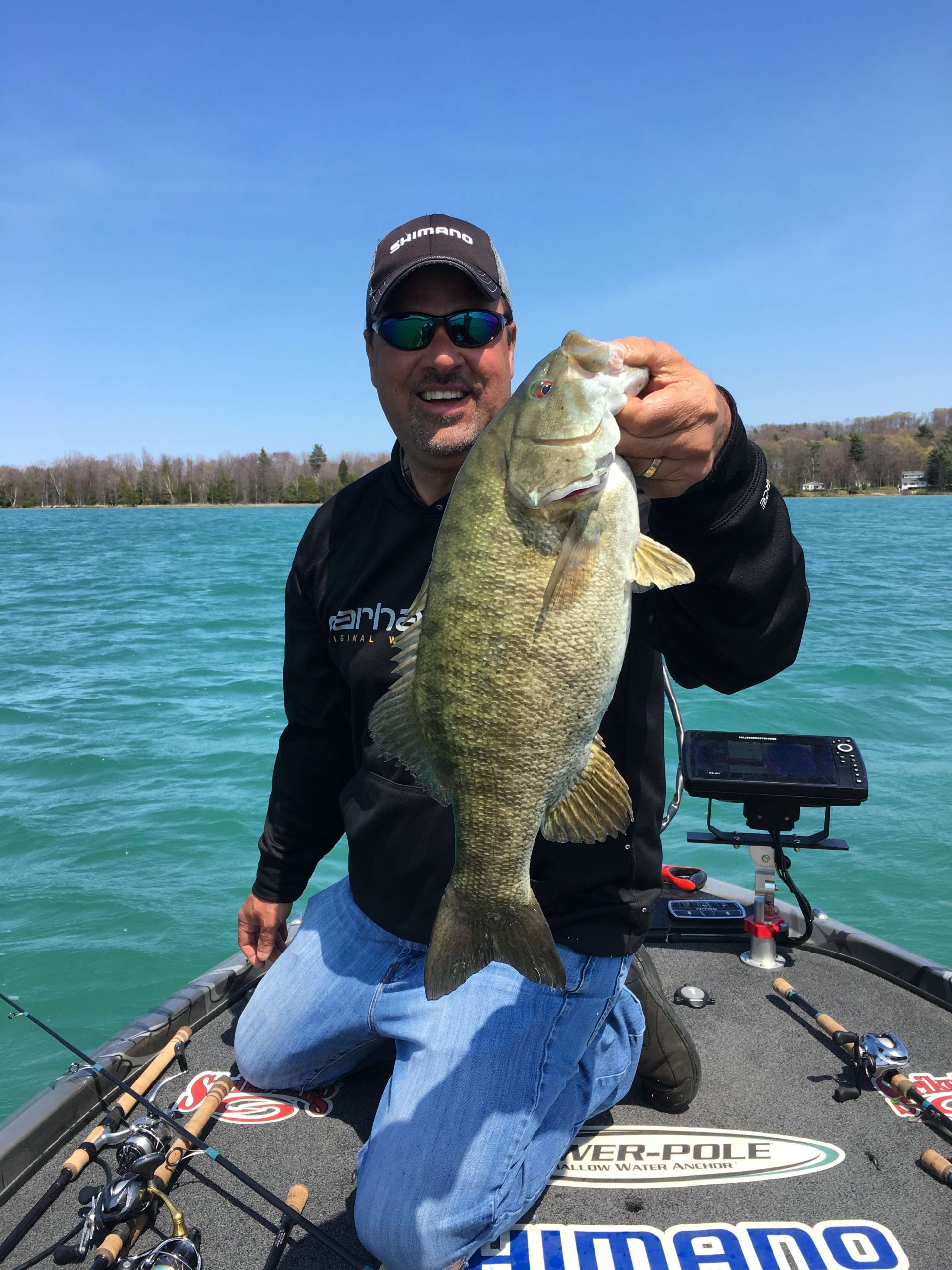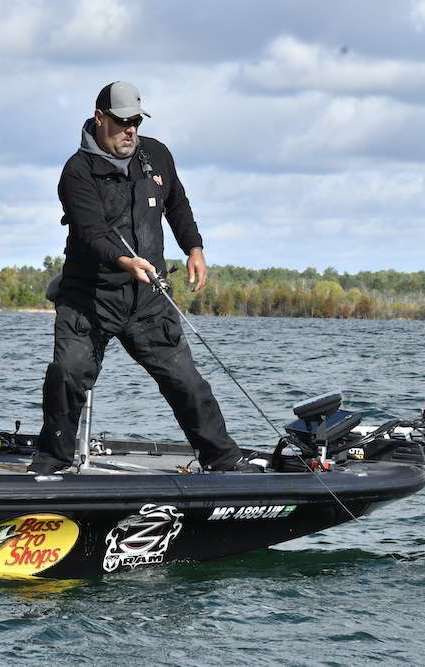
Two weeks ago I made my first spring trip up to northern Michigan to fish for smallmouth. While packing for the trip, I put a sack full of 3 1/2-inch green pumpkin Strike King Coffee Tubes and several bags of tube heads in various sizes in the boat. Then I stopped for minute, thought about what else I could possibly need for smallmouths and the answer was: nothing.
I almost laughed at the irony. In a time of intricate swimbaits, drop shots, $30 jerkbaits and all the other things that have come along in the last 10 years that will catch smallmouths, I was arming myself with only the simplest smallmouth tool in the box: a tube.
After three days of crushing monster smallies, I realized I really didn’t need anything else but a tube. With each bruiser that came aboard, I was constantly reminded of how timeless a tube is, and more specifically, how effective “cracking” a tube on a spinning rod is for smallmouth.
Much like a junebug worm in Florida or a brown jig in the Ozarks for largemouths, a tube never falls from grace when it comes to smallmouth. I have been using one since I was a kid and now, 30 years later, smallmouth still bite one like they have never seen it before.
Actually, I think some of the sexier lures like swimbaits and dropshots have kind of kept the old standard tube out of the limelight, but I can assure you, it’s as deadly now as it ever has been.
For those of you who have never heard of “cracking” a tube, it’s a technique that comes from my part of the country, and it gets its name from the sound the line makes as the tube is being cracked. We’re not talking about dragging a tube here, or even “stroking” a tube with high hops off the bottom. Cracking is much more like jerking a tube like you would a jerkbait, except you want to keep the tube contacting the bottom and you only want the tube to hop 3 to 6 inches at a time – not 3 to 6 feet at a time.
When most people first try cracking a tube, they think it’s like stroking a jig or worm on the ledges of Kentucky Lake where you are quickly raising the rod up way up high on a tight line and really ripping the lure up high off the bottom. That’s not the case with cracking. Cracking involves holding your rod in about the 9 o’clock position and simply popping the slack in your line in a repetitive rhythm while turning the reel handle about a quarter of a turn with each pop. When done correctly, the line will make a snapping or cracking sound with each sharp twitch of the rod and your tube will hop, hop, hop only a few inches at a time along the bottom.
So if you want a universal recipe for catching smallies nearly anywhere, anytime, here it is.
Start with a 3-1/2 inch green pumpkin tube and insert a lead head designed for tube fishing into it. As for sizes, my preferred graduations are 3/16-, 1/4-, 5/16-, 3/8- and 1/2-ounce. The size used will vary depending on wind and depth. Cracking 5-foot flats when it’s calm requires far less weight than cracking 20-foot depths when it’s blowing.
Next, I’m a huge proponent of using straight fluorocarbon line, not braid, for this technique. Usually, 8-pound test fluoro is my go to. I love braided line on spinning gear and use it on every thing else I throw. But for tube cracking, straight fluorocarbon allows more stretch in the system, providing less action to the bait and giving just a bit more “natural” look when a serious sl-l-ounch is trying to dog you. I also go to slightly bigger spinning reel for this technique – a size 3000 Shimano Stradic for more line capacity.
Finally, the most paramount component in the cracking system is the rod. For years I cracked with a standard 7-foot rod in a medium-heavy action, and I had no idea just how bad I was hindering myself until I went to a 7-foot, 5-inch rod and then even to a 7-foot, 8-inch rod in a medium action.
Cracking with a longer rod in just a slightly lighter action was like being in a different universe given the improved casting distance and the rod’s ability to load more gradually. I was literally killing myself trying to crack with a 7-footer in a medium-heavy!
Specifically, going to a longer rod with a lighter action dramatically improves the cracking technique in three ways: launching, loading and landing.
First, getting your tube as far away from the boat as possible is essential, and I can cast so much farther with a longer rod.
Second, when a smallmouth bites during the cracking technique, it’s not a thump or a tug, the line just sort of tightens. The trick here is not to set the hook in a typical reel-up-the-slack-and-swing fashion. Instead, just keep cracking until all the slack is gone and then reel tight and let the rod load up and set the hook for you. And this is where an extra 5 to 8 inches of tip and slightly softer bend works miracles.
Finally, that extra length and extra give in the action is going to go along way in controlling a big smallmouth at the boat and making sure it gets in the boat.
The rods I used last week were new G-Loomis’ IMX 892 (7-foot, 5-inch) and 922 (7-foot, 8-inch), which are both medium action (2 power) for lighter tubes ranging from 3/16- to 5/16-ounce. When we moved out deeper and went to a 3/8-ounce head, we went to a medium-heavy action (3 power) with the IMX 893 and 923. These rods were specifically designed for this technique – the whole concept is getting the tube out there and being able to control a big, angry smallmouth!
Once I got my cracking rhythm going with this system, it was an unadulterated smallmouth beat down – and I never needed anything else but the timeless tube.


